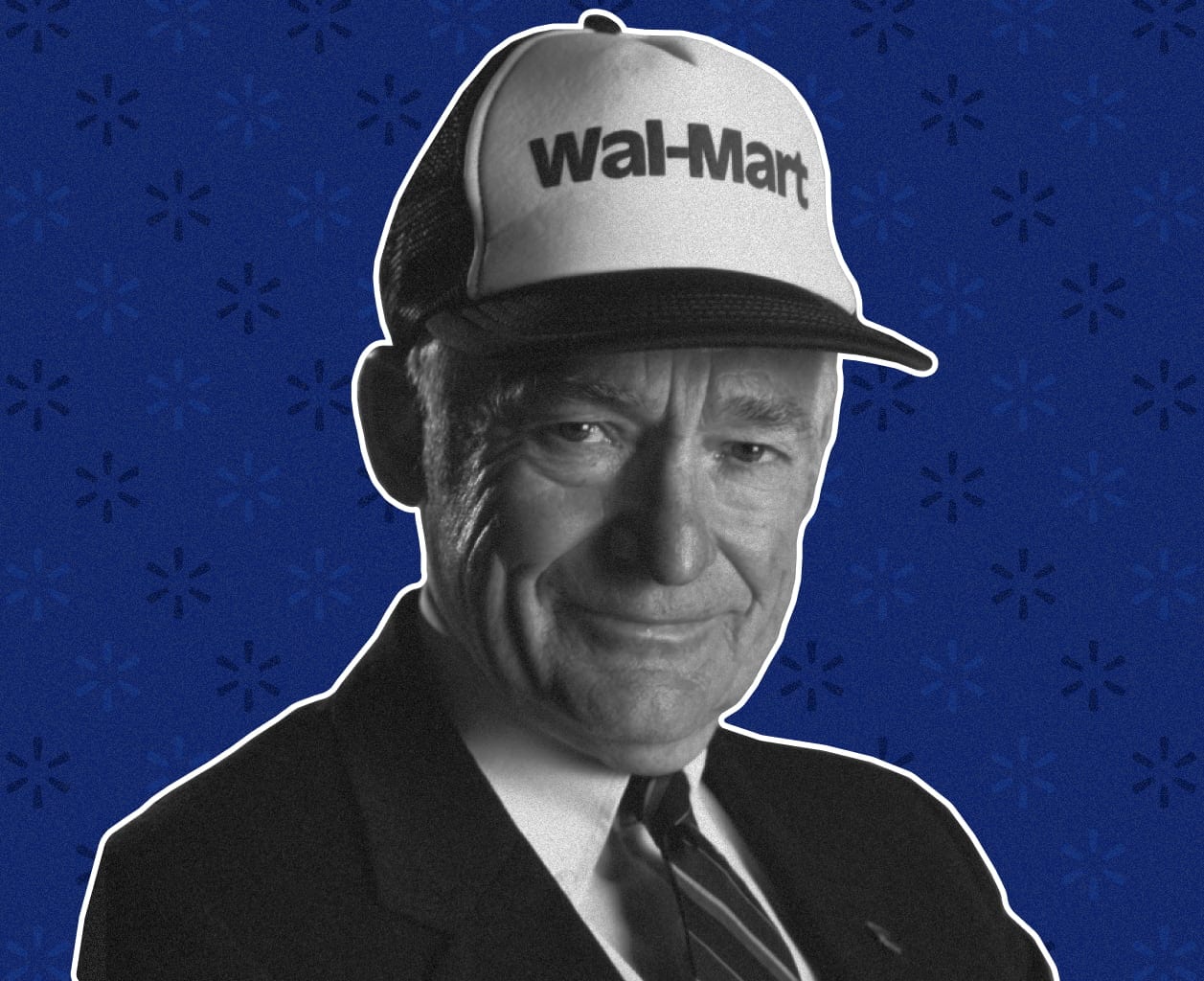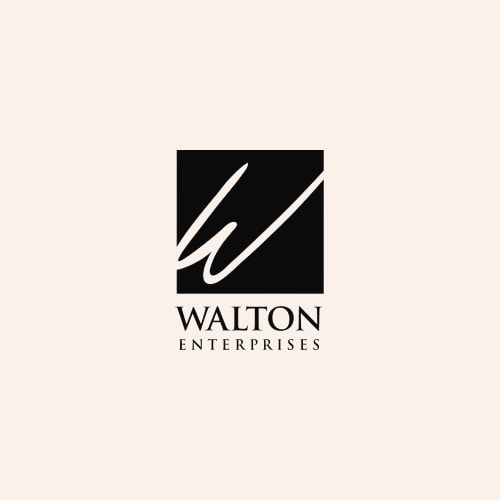
Leading with Purpose: How Walton Enterprises Is Reimagining the Family Office for a Sustainable Future
While many companies dream of becoming the next Amazon, Amazon still measures itself against Walmart’s scale. Meet the family office behind that empire: Walton Enterprises, which manages the Walton family’s ownership, investments and philanthropy. The Waltons routinely rank as the world’s richest family, with recent estimates placing their collective fortune in the $400 billion+ range, according to Bloomberg’s Billionaires Index.

Walton Enterprises serves as the central family office for the descendants of Sam and Helen Walton, overseeing their personal, philanthropic, and business interests. Established in 1953 - nearly a decade before Walmart’s first store opened in 1962 - Walton Enterprises laid the groundwork for what would become one of the world’s most influential family-owned enterprises.
About the Company

Walton Enterprise, LLC
- Location Arkansas, United States of America
- Type Single family office
- Founded 1953
- Services Wealth management
Before there was Walmart
Born in 1918 on a small farm in Oklahoma, Sam Walton grew up during the hardships of the Great Depression. After graduating from the University of Missouri, he began his career in retail in 1940 as a sales trainee at JCPenney, where his early focus on customer service became the hallmark of his later success.
In 1941, Walton enlisted in the U.S. Army during World War II. While stationed in Oklahoma, he met Helen Robson, whom he married on Valentine’s Day in 1943. Their shared ambition and discipline would shape both their family and future business.
After returning from the war in 1945, Walton purchased his first Ben Franklin variety store, part of the Butler Brothers franchise network. He invested $5,000 of his own savings and borrowed $20,000 from his father-in-law — an early example of the calculated risk-taking that would define his career.
Five years later, a lease dispute forced him to start over. Undeterred, he relocated to Bentonville, Arkansas, signed a 99-year lease, and opened Walton’s Five and Dime in 1950. By the time he founded Walton Enterprises in 1953, Walton had built a regional chain of more than 15 stores across Arkansas and neighbouring states — laying the foundation for what would become Walmart, the world’s largest retailer.
Building the empire
By the 1950s, Sam Walton was quietly reinventing the American retail experience. His obsession with the customer shaped every detail — from free parking and longer opening hours (5 a.m. to 10 p.m., unprecedented at the time) to the small community touches that drew shoppers in, like ice cream and popcorn stands outside his stores on weekends.
Yet his greatest innovation came from rethinking how stores worked inside. Inspired by the concept of self-service retail, Walton replaced the traditional model of sales clerks handling every purchase with open aisles where customers could select products themselves and pay at the front. This shift cut costs, increased efficiency, and allowed him to lower prices even further — a formula that tripled profits within a year and became the cornerstone of Walmart’s future success.
Redefining retail stores
By the early 1960s, Sam Walton believed there was still untapped potential in American retail. His next idea was bold: to open large discount stores in rural towns that big-city retailers ignored. The concept required significant capital and personal risk. In 1962, Walton mortgaged his home, borrowed heavily, and — together with his brother Bud Walton — opened the first Walmart store in Rogers, Arkansas.
Through relentless focus on efficiency and volume, the brothers expanded rapidly throughout the decade. By 1970, Walmart had become a regional powerhouse, and the Waltons took the company public, raising about $5 million while retaining roughly 61% of the shares. The move provided liquidity to repay debts and positioned Walmart for national growth.
With his financial future secure, Sam turned his attention to philanthropy. In the 1980s, he established the Walton Family Foundation, dedicated primarily to improving education, community development, and environmental conservation across the United States. The foundation remains the philanthropic arm of Walton Enterprises, reflecting the family’s enduring commitment to using private capital for public good.
Walton Enterprises goes corporate
Over the decades, Walton Enterprises evolved into the central vehicle for managing the Walton family’s wealth, governance, and ownership in Walmart and related ventures. Sam Walton structured the entity so that his four children each held an equal stake — a design intended to preserve balance and cohesion across generations.
Following the death of his son John Walton in 2005, his ownership interest passed to his wife Christy Walton and their son Lukas Walton, who has since emerged as one of the family’s most active investors and philanthropists.
As Walmart expanded into one of the world’s largest retailers, Walton Enterprises became responsible for coordinating the family’s collective shareholding, investment activities, and philanthropic commitments. The family office remains headquartered in Bentonville, Arkansas, adjacent to Walmart’s corporate offices, and employs a growing team of professionals supporting finance, strategy, and family governance.
While the Walton family remains private about internal structure, reporting indicates that Jim C. Walton, Sam’s youngest son, continues to play a leading role in overseeing the enterprise. The organisation also maintains additional operational presences in Washington, D.C., Denver, and Jersey City, reflecting its national scope.
The new adventures of Walton Enterprises
The second and third generations of the Walton family continue to shape both the family enterprise and its wider legacy.
Rob Walton, Sam’s eldest son, served as chairman of Walmart until 2015 and remains a key figure on its board. He also championed environmental initiatives within the Walton Family Foundation, helping to launch its Environment Program, which supports sustainable fisheries, water conservation, and renewable energy efforts.
Alice Walton, the family’s only daughter and one of the world’s wealthiest women, has become a leading patron of the arts. In 2011, she founded the Crystal Bridges Museum of American Art in Bentonville, Arkansas, investing more than $50 million to open the museum and assemble a $500 million private collection. Crystal Bridges has since become a major cultural landmark, reflecting Alice’s belief in making art accessible to all.
Jim Walton, the youngest son, chairs the family-owned Arvest Bank, which now manages over $20 billion in assets across several U.S. states. A long-time Walmart board member, he stepped down in 2016, passing his seat to his son Steuart Walton, who represents the third generation of family leadership.
Together, the Waltons have maintained an active but decentralised approach to stewardship, balancing business, philanthropy, and cultural investment across multiple branches of the family.
Profits with purpose
The most dynamic evolution of the Walton legacy comes from Lukas Walton, a third-generation heir who has channelled his wealth toward building a more sustainable and inclusive economy. As founder and chair of Builders Vision, his family office and impact platform, Lukas aims to align investment capital with measurable environmental and social progress.
Founded in 2021, Builders Vision manages more than $15 billion across three interconnected units — Builders Asset Management, Builders Initiative (its philanthropic arm), and Builders Private Capital. Together they pursue ventures in climate technology, ocean health, regenerative agriculture, and other mission-driven sectors. In 2025, the firm consolidated its operations under a single Chief Investment Officer, signalling a maturing, integrated approach to both purpose and performance.
“If we are going to make lasting change happen, we need our mission to show up in everything we do — especially in how we commit our resources,”
— Lukas Walton, CNBC interview
Through Builders Vision, Lukas represents the new face of Walton Enterprises — one that views private capital not just as a means of wealth preservation, but as a catalyst for systemic change.
Looking ahead
From a single variety store in rural Arkansas to one of the most sophisticated family offices in the world, Walton Enterprises reflects how legacy wealth can evolve with intent. What began as Sam Walton’s pursuit of efficiency and service has grown into a multigenerational system for stewardship, governance, and purpose-driven investment.
Today, the family’s influence stretches well beyond retail. Through the Walton Family Foundation, the family continues to champion education and community initiatives. Meanwhile, Builders Vision, led by Lukas Walton, has redefined the family’s role in climate technology, ocean health, regenerative agriculture, and increasingly, frontier innovation.
Recent reports suggest that Walton-affiliated capital has also entered the artificial intelligence arena, including exposure to OpenAI, a move that signals how the family’s investment philosophy is broadening from sustainability toward systemic innovation. Whether through climate resilience or responsible AI, the Waltons are positioning their capital where long-term impact meets transformative potential.
Their journey offers a model for how family offices can adapt in an age of accelerated change: by combining patient capital, generational purpose, and strategic experimentation.
For the Waltons, the legacy is no longer just about preserving wealth; it’s about shaping the systems that define the future.
Further Reading

Peter Thiel’s capital stack: A contrarian view for family offices
InvestmentsPeter Thiel is one of Silicon Valley’s most influential and polarising figures. A billionaire investor, PayPal co-founder, and early Facebook backer, he is also the driving force behind Palantir and Founders Fund. Known for his contrarian worldview and libertarian ideology, Thiel has built a layered approach to managing his wealth. His method blends operating companies, […]

From fragmentation to focus: A $200M portfolio transformation
Technology StacksA UK-based multi-generational single-family office managing over $200 million faced challenges managing its complex portfolio spread across multiple continents and assets. As their sophisticated investments exceeded the limits of their operational infrastructure, they partnered with IQ-EQ to develop a tailored solution. This case study outlines how IQ-EQ helped them shift from a reactive to a […]

The hidden drains on family office portfolios and how to stop them
Listed Stocks & BondsWhen Greenlock started working with funds, a single-family office client asked them to audit their structure. At first, everything looked standard — until they stumbled upon a curious share class. The minimum investment was just $10k, designed for plain-vanilla retail investors with the highest regulatory protection and enormous embedded retrocessions. Clearly, it was not a […]

Larry Ellison: The unconventional billionaire and his family office
LeadershipLawrence Joseph Ellison is one of the world’s most enigmatic billionaires. As a two-time college dropout and a personal friend of the late Steve Jobs and Elon Musk, he has built a reputation for his bold, unconventional approaches to business and lifestyle. As the founder and former CEO of Oracle Corporation, he has chartered a […]